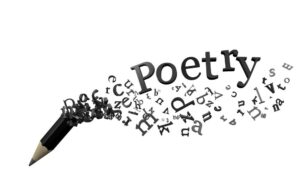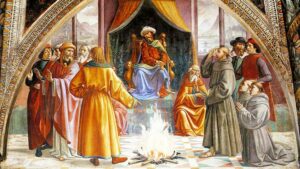There was a time when educated Indians wishing to show off their knowledge of the English language began writing about the English countryside. Their purpose was also to reach a wider audience. A politician poet too began to use the English language as her mode of expression. She wrote about the meadows, lawns, and woods of the English countryside. She also wrote about the cuckoo, giving passing references to English myths and legends. Before she could gain complete confidence over her way of writing, an Englishman gave a rap on her head and said politely “write about the things you are familiar with.” It is true that she studied at London and Cambridge for three years, sailing to England when she was sixteen. She was familiar with most things English. But she was Indian by birth and domicile.
Those words of genuine advise “to be a genuine Indian poet of the Deccan, not a clever, machine-made imitator of English classics” played a turning point in her poetic career, developed under the influence of the Rhymers’ Club of London. She began to write about bangle sellers and palanquin bearers. By writing on such topics she was more familiar with, she was able to introduce India not only to Indians but also to the outside world, for she preferred to express herself not in her mother tongue Bengali but in English, an international language.
The politician poet was Sarojini Naidu. The Englishman was Sir Edmund Gosse. Arthur Symons was another Englishman. Had not Gosse interfered at the right moment, Sarojini Naidu like many others would have concentrated on a different culture and would have talked more about daffodils and oaks, that we poor Indians have not seen in our lifetime. In fact, Edmund Gosse’s advise paved way for a writing that can truly be called Indian writing in English.
Both in school and college, our students hear a lot in their classrooms about coniferous forests and Iceland, Napoleon Bonaparte and Hitler, Sphinx and phoenix, Orpheus and Eurydice, and Plato and Aristotle. Very rarely, they are taught about Chirapunji rainfalls and Tanjore temple, Raja Raja Chola and Akbar, Konark Temple and Ajanta caves, Vivekananda and Ramana Maharishi, Aryabhata and Kalidasa.
Literature is something that one sees, feels and experiences as one reads. A poem like the ‘Lotus’ (Toru Dutt), a short story like the ‘Sparrows’ (K.A.Abbas), a novel like ‘A Tiger at Twilight’ (Manoj Das), an essay like the ‘Reluctant Guru’ (R.K.Narayan) can be easily and quickly understood by the teacher because the subject matter the Indian writers deal with are outright Indian and is embedded in their psyche. No wonder that the teacher reads between the lines easily and quickly to grasp the meaning of the work and therefore interprets and imparts to the students who are also interested in knowing more about the familiar seen differently.
Our students understand most British, American, and Irish authors prescribed by Indian universities in their syllabi, of course, with great difficulty. This is also to say that teachers too try to understand such authors with the available bazaar notes, whose low standard would make any genuine scholar shy away from them. Vice-Chancellors of Universities invariably talk of “the deteriorating standards of students and helpless teachers, who rarely read anything out of the syllabi. Reading a newspaper too is not in their schedule.” Instead, a second thought on such mudslinging would help Vice-Chancellors wake up to healthy situations. There is no use of simply hollering ‘Be Indian, Buy Indian’. We should stick to the slogan we rave and recite if we want to be truly Indian. ‘Stick to our culture’ should be made a new slogan in our university campuses. It is bound to work miracles.
Indian writing in English has already made a mark round the globe. William Shakespeare and Thomas Hardy, Bernard Shaw and James Joyce, Mark Twain and James Thurber hereafter should take a back seat and watch the Indian writers in English move to the front row.
Diaspora Indian writers cry over their own problems… problems they brought on themselves by running away from their motherland. Hence let them face the music and keep their problems to themselves. Let them not struggle to transfer their headaches and heartaches on to our students, who are yet to decide as to where they should start their life after college.
These days the best of awards go to Indian writing in English and the time is not very far when foreigners would stop saying “India can boast of only one writer, Rabindranath Tagore, to bag the Nobel Prize for Literature.”
Recognition for Indian writing in English has started coming from different corners of the globe. But it has to come from its home too.























